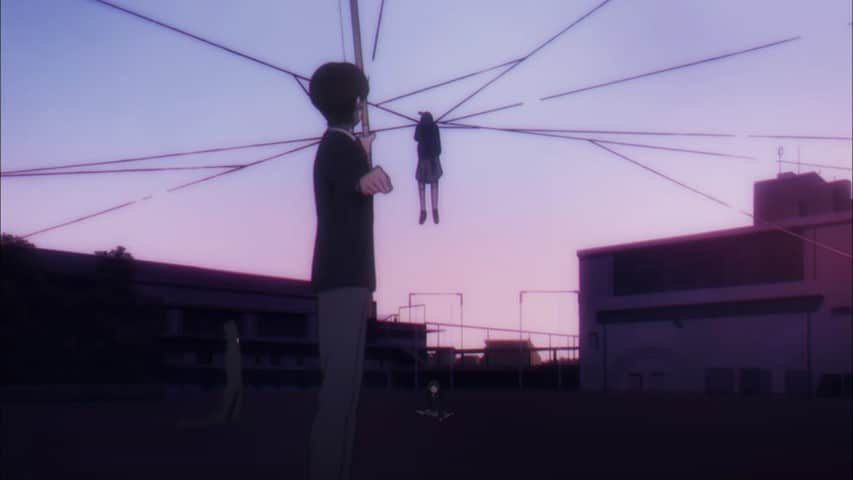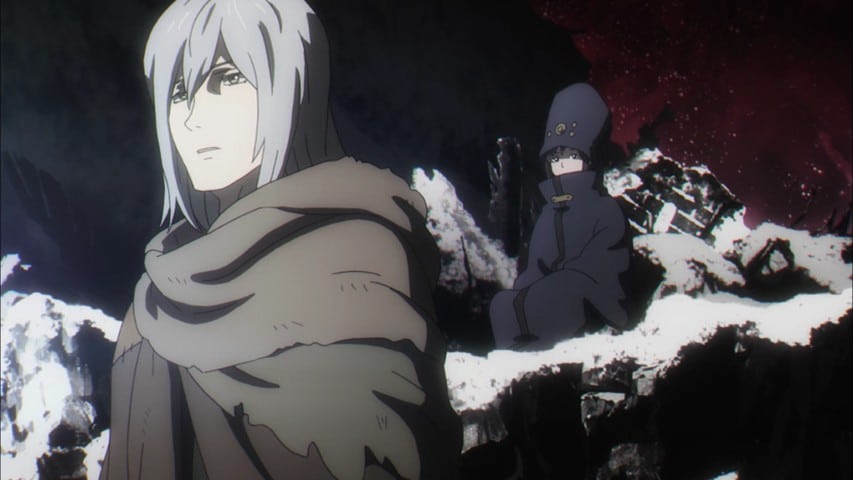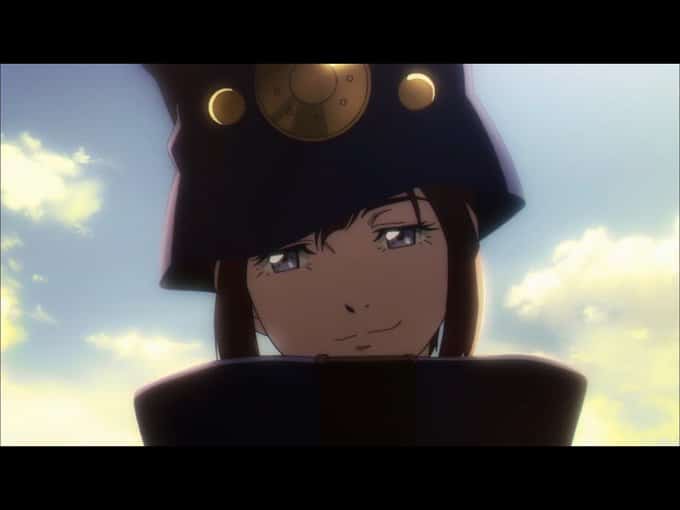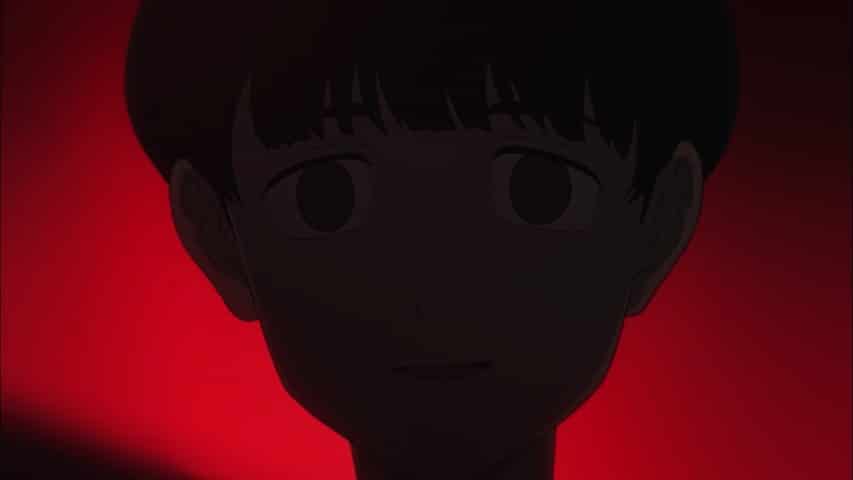
Is Boogiepop wa Warawanai (2019) Good?
Boogiepop wa Warawaranai (2019) is a good anime and worth watching because
- It is a compelling mystery anime with an unorthodox narrative structure
- It has a great female protagonist
- It is a good psychological anime that deals with interesting philosophical ideas and themes
Background
Boogiepop wa Warawaranai (Boogiepop Never Laughs) was originally a light novel by Kouhei Kadono (one of the first light novels) and this is the second adaptation of the novel. This 2019 adaptation was adapted by Madhouse and was directed by Natsume Shingo (directed One Punch Man). Shingo is good at attracting the right talent for his projects.
The first adaptation of Boogiepop wa Warawaranai (Boogiepop Never Laughs) was in 2000. It was a 12 episode anime that was also animated by Madhouse. The 2001 adaptation is commonly referred to as Boogiepop Phantom. Boogiepop Phantom (2000) was released around the same time as Serial Experiments Lain (1998) and they are similar in style and theme.
Is Boogiepop 2019 A Sequel?
Boogiepop wa Warawaranai (2019) is NOT a sequel. It’s also not a reboot. Boogiepop wa Warawaranai (2019) is set in the same mythology as Boogiepop Phantom (2000) but it adapts the Boogiepop and others and Boogiepop at Dawn novels. Boogiepop Phantom (2000) is an original story takes place after the events in Boogiepop and Others and Boogiepop at Dawn.
So Boogiepop wa Warawaranai (2019) is more of a prequel than a sequel.
How does Boogiepop (2019) Compare with Boogiepop Phantom (2000)?
Boogiepop Phantom used sepia tones and a reduced brightness for most of the episodes. This allowed it to display the creepy and dark nature of it’s world. The color schemes and the vignette effect accentuated the feelings of anxieties and mental state of the characters. This is one of the key reasons why Boogiepop Phantom (2000) was a great horror anime.
Boogiepop (2019) doesn’t use the same style as Boogiepop Phantom (2000) when it comes to the sepia tone and dark atmosphere. The eerie style/atmosphere of Boogiepop Phantom (2000) is missing in Boogiepop (2019) and it doesn’t draw you the same way as a horror anime. However, Boogiepop (2019) does have it’s moments as a horror and is arguably a better mystery/psychological anime.
One of the highlights of Boogiepop Phantom (2000) was it’s excellent use of sound design. Boogiepop Phantom (2000) used synthesized avant-garde music that ranged from Gregorian to electronic. This really put it over the top as a scary horror anime. Boogiepop (2019), on the other hand, doesn’t incorporate eclectic use of sound like Boogiepop Phantom does but goes for a more calmer, contemplative soundtrack.
Boogiepop (2019) has more action and Natsume Shingo was able to recruit talented key animators for fight scenes.
You shouldn’t expect these high quality visuals shown in this promotional video consistently throughout the entire series but the animation is pretty solid.
One thing Boogiepop Phantom (2000) and Boogiepop (2019) have in common is the contemplative tone and unorthodox narrative structure. The essential nature of the novels were kept intact from beginning to end by both adaptations.
Boogiepop wa Warawaranai (2019) is a Great Mystery Anime
One of the fun aspects of a mystery anime is to make sense of what is going on and how a piece of information fits into the big picture. Boogiepop wa Warawaranai (2019) is able to standout as a mystery anime because of it’s interesting narrative structure and style that allows the characters to have a unique point of view, while viewers get pieces of information in a nonlinear fashion that relate to the larger plot .
There are often time skips and events that happen out of order. The time skips requires viewers to make an effort to pay attention to details and requires them to have patience. There are multiple instances where scenes and events raise more questions than answers at first. Watching Boogiepop wa Warawaranai (2019) is like trying to solve a puzzle. The events can be seen as a piece in a big puzzle. After a while, things start to make sense and the puzzle starts coming together piece by piece.
Boogiepop wa Warawaranai (2019) tends to show connections between seemingly unrelated events and people. It tends to jump back and forth at will. So if you miss one bit of information, you might feel at a total loss. Viewers can be turned off by this and drop the series as a result. However, this is part of Boogiepop wa Warawaranai (2019)’s charm. Viewers have to work way more than normal shows in order to keep up. The sequences of events aren’t random however. There’s an overarching logic to them and everything is related. It’s a rewarding process for those who decide to stick around as the story starts to build and make more sense as you explore its universe.
There aren’t any traditional protagonists or antagonists in Boogiepop wa Warawaranai (2019). Characters pop in and out of the story, filling different roles at different times. We get new perspective from the same arc, often with different levels of impact to the story.
Director Natsume Shingo stayed with the series’ anachronistic style, which was present in the novels and the first adaptation. However, the first arc was extremely rushed and out of place, even by Boogiepop’s standards. This may cause a disconnect for viewers. In Shingo’s defense, the first arc was meant as a introduction and a taste of what viewers can somewhat expect. The Imaginator Arc and Boogiepop at Dawn arc (the best arc) is where the series shine and Shingo did an excellent job of executing and capturing the essence of the novels.
If you are looking for a good mystery anime that’s different, then Boogiepop wa Warawaranai (2019) is for you.
Boogiepop wa Warawaranai (2019) Has A Great Female Protagonist
The protagonist is Boogiepop, a supernatural entity that is believed to be the alter ego of second-year student at Shinyo Academy, Touka Miyashita. Miyashita does not appear as herself for much of the series and that’s because the focus is more on Boogiepop and the characters and events around her.
Boogiepop is an enigma. Her backstory and how she came to be is very intriguing. Interestingly, Boogiepop isn’t always present in many scenes. However, when she does appear, she makes a strong impact. She’s plays an observer role but is pretty active against “threats to the world”. She believes her purpose is to fight and eliminate any dangerous entities that might pose harm to the world.
Boogiepop has an omniscient aura. She is most similar to Rika Furude (or more accurately Frederica Bernkastel) from another great mystery/psychological/horror anime, Higurashi When They Cry (2006). Boogiepop is good at knowing what’s going on inside a person’s head and knowing how they might be feeling. As a result, she knows exactly what to say to comfort those around her and is well equipped to resolve a wide range of problems. Boogiepop doesn’t get swayed by emotions and is always thinking of the big picture.
One of the main reasons why Boogiepop is such a great protagonist is because of her voice actor, Yuuki Aoi. Yuuki is pretty versatile as she has voiced many different female characters in the past including Tanya Degurechaff from The Saga of Tanya the Evil (2017), Tsuyu Asui from My Hero Academia (2016), and Tornado of Terror from One Punch Man (2015).
The Boogiepop portrayed in Boogiepop Phantom (2000) was detached, emotionless, and was straight to the point. Whereas in Boogiepop wa Warawaranai (2019), Yuuki portrays Boogiepop as a more empathetic but mysterious, cryptic figure. Both voice actors do an amazing job. If you are a fan of anime with emotionless characters, click HERE.
One of the standout performances of Boogiepop as a character is in episode 9 in the Imaginator arc where she saves Misaki and tells him he’s been brainwashed. Misaki questions whether or not his feelings for Aya were real and whether or not he had free will. Boogiepop responds by delivering this powerful message:
“Adapting yourself to society is essentially brainwashing yourself to meet societal expectations. Now the problem is, within your psyche – which has no freedom – what do you value the most?”
Boogiepop’s voice and intonation are perfect while she delivers this line, all while Richard Wagner’s Die Meistersinger von Nurnberg theme plays in the background. It’s an amazing scene and Yuuki completely nails it.
Boogiepop wa Warawaranai (2019) is Filled With Interesting Philosophical Ideas
If your looking for a good psychological anime, then Boogiepop wa Warawaranai (2019) is a must watch. Good psychological anime is a rarity nowadays (ex. The Promised Neverland, Happy Sugar Life), but you do find a few gems once in a while.
Click HERE if you want to an analysis of a good psychological/thriller anime in The Promised Neverland (2019) and HERE if you want an analysis of a psychological/horror in Happy Sugar Life (2018).
Boogiepop wa Warawaranai (2019 is not shy about pondering big questions and tackling interesting ideas. These topics include things like free will, emptiness, evolution, the self and how anything in society that conflicts with the desires of the self causes inner struggle.
The Towa organization is a mysterious organization that plays a huge role in this series. Their research is centered around evolution and they conduct experiments around the world to figure out what’s “next”. Because they don’t know what’s next, they target humans with supernatural abilities in an attempt to preserve humanity in a struggle for survival.
Most of the humans that “evolve” end up doing so with the cost of losing their own humanity. For example, Dr. Kisugi is a character who is obsessed with fear to the point it overwhelms her. She later “evolves” and starts targeting innocent people. The more fear her victims experience, the more bloodthirsty she becomes, until she “evolves” into a monster.
One of the best scenes in Boogiepop wa Warawaranai (2019) is when Boogiepop’s persona comes out in a therapy session with Dr. Kisugi and they essentially have a conversation about how human beings have the potential to be evil. Boogiepop claims that all humans are “fuses” and that they can “go off at any time”, mainly due to their personal fears and shortcomings. This is particularly significant because it’s foreshadowing the eventual clash between Boogiepop and Dr. Kisugi and drives home one of the key themes in the series.
What makes Boogiepop such a good psychological anime is the fact that most of the supernatural beings are products of teenagers’ insecurities. A physical manifestation of these beings are often created and they cause havoc. It’s a fun ride watching Boogiepop analyze and dissect these supernatural beings.
Boogiepop wa Warawaranai’s (2019) disjointed narrative structure helps as it provides multiple points of view, with each character having different issues and views of the world. All of that adds to the multifaceted layers of the ideas that Boogiepop presents.
Conclusion
Boogiepop wa Warawaranai is an introspective and open ended series. Even though it got off to a rocky start in the opening arc, it manages to redeem itself in later arcs. Shingo and Madhouse stay pretty faithful to the novels and manage to deliver. If your a fan of mystery or psychological anime, then Boogiepop wa Warawaranai will be a fascinating experience.
For more analysis, check out:
Is The Promised Neverland Good?
Anime Where MC is OP But Hides It
Why One Punch Man Season 2’s Animation is Bad | Review
Is Happy Sugar Life A Good Psychological Anime?
Levi vs Beast Titan | Attack On Titan Best Fight
Tanjiro vs Rui | Demon Slayer Best Fight



